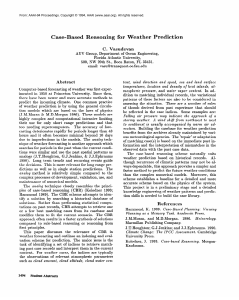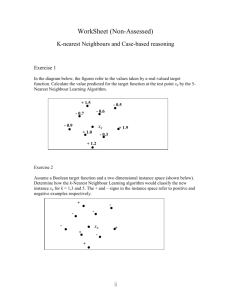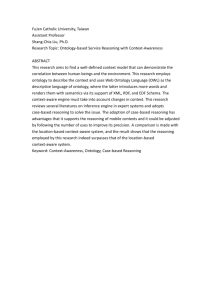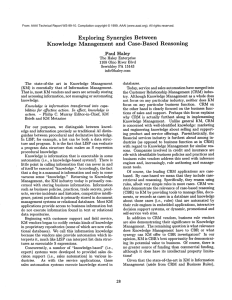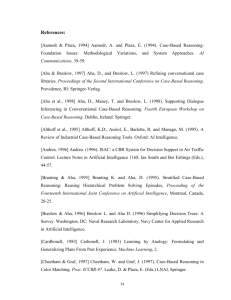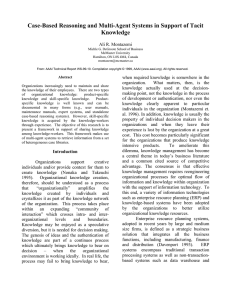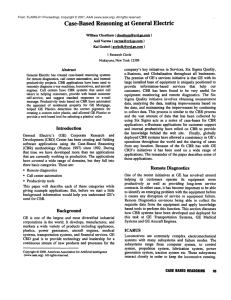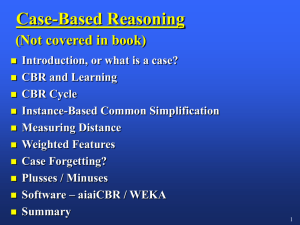here - BCS SGAI
advertisement
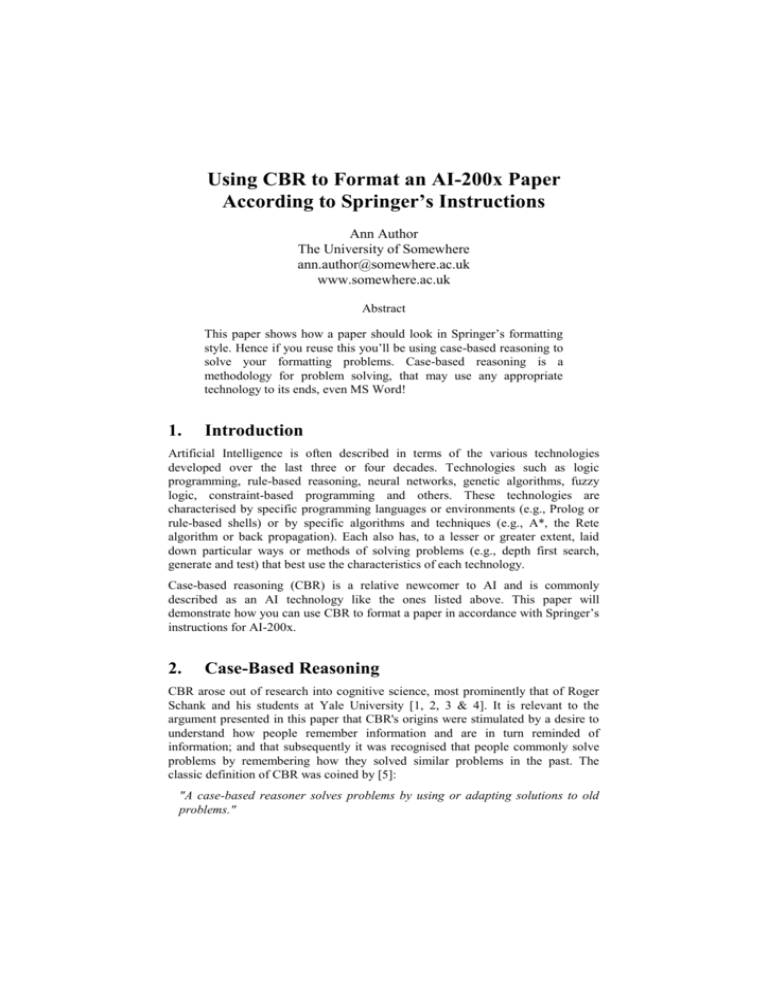
Using CBR to Format an AI-200x Paper According to Springer’s Instructions Ann Author The University of Somewhere ann.author@somewhere.ac.uk www.somewhere.ac.uk Abstract This paper shows how a paper should look in Springer’s formatting style. Hence if you reuse this you’ll be using case-based reasoning to solve your formatting problems. Case-based reasoning is a methodology for problem solving, that may use any appropriate technology to its ends, even MS Word! 1. Introduction Artificial Intelligence is often described in terms of the various technologies developed over the last three or four decades. Technologies such as logic programming, rule-based reasoning, neural networks, genetic algorithms, fuzzy logic, constraint-based programming and others. These technologies are characterised by specific programming languages or environments (e.g., Prolog or rule-based shells) or by specific algorithms and techniques (e.g., A*, the Rete algorithm or back propagation). Each also has, to a lesser or greater extent, laid down particular ways or methods of solving problems (e.g., depth first search, generate and test) that best use the characteristics of each technology. Case-based reasoning (CBR) is a relative newcomer to AI and is commonly described as an AI technology like the ones listed above. This paper will demonstrate how you can use CBR to format a paper in accordance with Springer’s instructions for AI-200x. 2. Case-Based Reasoning CBR arose out of research into cognitive science, most prominently that of Roger Schank and his students at Yale University [1, 2, 3 & 4]. It is relevant to the argument presented in this paper that CBR's origins were stimulated by a desire to understand how people remember information and are in turn reminded of information; and that subsequently it was recognised that people commonly solve problems by remembering how they solved similar problems in the past. The classic definition of CBR was coined by [5]: "A case-based reasoner solves problems by using or adapting solutions to old problems." Note that this definition tells us "what" a case-based reasoner does and not "how" it does what it does. Conceptually CBR is commonly described by the CBR-cycle. Problem RETRIEVE RETAIN Case-Base R E U S E REVISE Confirmed Solution Proposed Solution Figure 1 The CBR-cycle after Aamodt & Plaza [6] This cycle comprises four activities (the four-REs): 1. Retrieve similar cases to the problem description 2. Reuse a solution suggested by a similar case 3. Revise or adapt that solution to better fit the new problem if necessary 4. Retain the new solution once it has been confirmed or validated. Once again, what is being described here is a methodology for solving problems not a specific technology. Peter Checkland [7] describes a methodology as: "an organised set of principles which guide action in trying to 'manage' (in the broad sense) real-world problem situations" [7, p.5] The CBR-cycle fits very nicely into this definition of a methodology as a "set of principles which guide action". 3. Conclusion Thus if you follow the styles and layout used in this sample paper you have applied CBR [8] to solve the problem of formatting your AI-200x paper. References 1. 2. 3. 4. 5. 6. 7. 8. Schank, R. & Abelson, R. (eds) Scripts, plans, goals and understanding. Erlbaum, Hillsdale, NJ, 1977 Schank, R. (ed) Dynamic memory: a theory of learning in computers and people. Cambridge University Press, Cambridge, 1984 Kolodner, J.L. Reconstructive memory, a computer model. Cognitive Science 1983; 7(2):281-328 Hammond, K.J. Case-based planning: viewing planning as a memory task. In: Kolodner, J.L. (ed) Proceedings of the DARPA case-based reasoning workshop, Morgan Kaufmann, California, 1988 Riesbeck, C.K. & Schank, R. Inside case-based reasoning. Erlbaum, Hillsdale, NJ, 1989 Aamodt, A. & Plaza, E. Case-based reasoning: foundational issues, methodological variations, and system approaches. AI Communications 1994, 7(i):39-59 Checkland, P. & Scholes, J. Soft systems methodology in action. Wiley, London, 1990 Watson, I. Applying case-based reasoning: techniques for enterprise systems. Morgan Kaufmann, California, 1977
